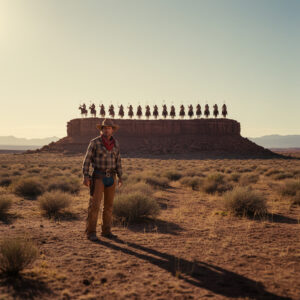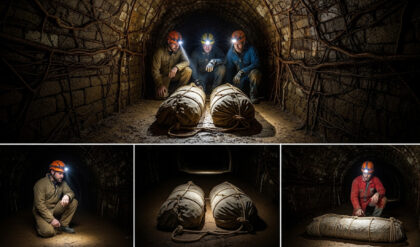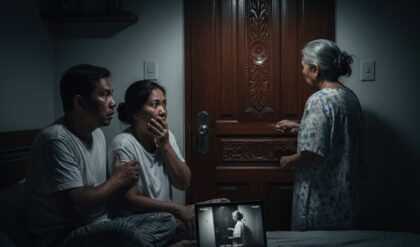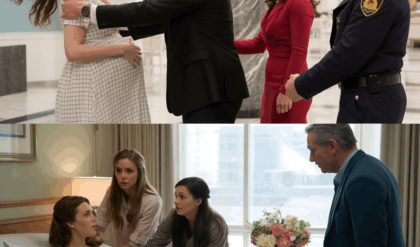Sewn Shut in the Desert: The Chilling Mystery of Ray and Nicole’s Murder
The Arizona desert has a way of keeping secrets, its vastness swallowing stories whole. In June 2010, Ray Larson, 26, and Nicole Edwards, 24, drove into that endless expanse for a weekend at the Grand Canyon, their hearts set on adventure. They never came back. For 11 years, their disappearance baffled police, tore at their families, and fueled wild theories online. Then, in October 2021, three hobbyist cavers ventured into a forgotten mine in northern Arizona and found something that turned a mystery into a nightmare: two sleeping bags, hand-sewn shut, holding the skeletal remains of Ray and Nicole. What unfolded was a tale of calculated murder, a predator’s precision, and a desert that hid the truth for over a decade.
Ray and Nicole were no strangers to Phoenix’s sunbaked streets. He was a graphic designer with a knack for bold visuals; she was a newly certified nurse, eager to heal. Their lives were grounded—friends, jobs, plans for a future together. Their trip north was a spur-of-the-moment escape, a chance to camp under the stars and snap photos of the Grand Canyon’s raw beauty. On June 11, they packed Ray’s silver Toyota Corolla with gear, snacks, and a borrowed camera. Surveillance footage from a gas station near the park’s south entrance caught them laughing with the clerk, carefree and alive. By Saturday evening, they were gone, their phones silent, their trail cold.
When Nicole missed her Sunday night call to her mother—a ritual after every road trip—alarm bells rang. By Monday, neither showed up for work. Their phones went to voicemail, bank cards untouched. Families alerted police, who filed a missing persons report that evening. Cellphone pings traced their last moments to the gas station, then nothing. Helicopters buzzed over forests, volunteers scoured ravines, and rangers combed the Grand Canyon’s edges. Hundreds of hours yielded no clues—no footprints, no gear, no signs of life. It was as if the desert had erased them.
A week later, a Forest Service officer found their Corolla on a remote logging road, far from tourist trails. Inside were their wallets, Ray’s phone, a half-eaten bag of chips, and a map spread open on the passenger seat. The keys rested on the driver’s seat, glinting in the sun. No struggle, no blood, no other tire tracks. The couple’s footprints led a few yards from the car, then vanished into hard earth. Police were stumped. A runaway couple wouldn’t leave their IDs and money. Suicide didn’t fit—no notes, no red flags in their lives. Foul play seemed plausible, but with no forensic evidence, the trail ended there.
The case gripped Arizona. Reddit threads spun theories: a serial killer stalking the wilds, a hermit guarding his solitude, a drug cartel protecting hidden routes. None led anywhere. Private investigators hired by the families hit dead ends. Billboards begged for tips, websites pleaded for answers, but the desert stayed silent. For 11 years, Ray and Nicole’s loved ones lived in limbo, caught between hope and grief, with no closure in sight.
Then came October 2021. Three cavers, exploring an abandoned mine off a rugged trail, pushed past rusted rails and collapsed tunnels. Deep underground, where light barely reached, they spotted two sleeping bags—one blue, one green—tucked against a wall. The zippers were useless, replaced by heavy twine stitched tightly shut. A faint, sickly odor hung in the air. They didn’t touch the bags, sensing something was terribly wrong. Instead, they called 911, and within days, forensic teams descended into the mine’s depths.
Dental records confirmed the worst: Ray Larson and Nicole Edwards had been found. But the discovery raised more questions than it answered. Autopsies revealed a brutal story. Ray had died from a single, powerful blow to the head, his skull fractured instantly. Nicole had been strangled, her hyoid bone snapped—a slow, intimate death. Forensic entomology added a chilling twist: their bodies had been stored elsewhere for 24 to 48 hours after death before being moved to the mine. This wasn’t a crime of passion or panic. It was cold, deliberate, planned.
The mine itself was a fortress of isolation. Tucked off unmapped trails, it was known only to locals, old miners, or those who studied the region’s history. Its entrance, half-collapsed, required effort to access. Whoever placed the bodies there knew the terrain intimately, navigating its dangers with ease. Investigators scoured records—land deeds, miner logs, hunting permits—hoping to narrow down suspects. They interviewed survivalists, park rangers, even geologists familiar with the area. Nothing surfaced. The sleeping bags and twine, sold at countless Walmarts and online, offered no unique markers. Eleven years underground had erased DNA, fingerprints, and any trace of the killer’s touch.
Behavioral analysts built a profile of the unsub: likely a lone male, methodical, with deep knowledge of northern Arizona’s backcountry. The differing murder methods were significant. Ray’s bludgeoning suggested a need to neutralize a potential threat quickly—perhaps he’d fought back. Nicole’s strangulation pointed to control, a personal act requiring sustained effort. The sewn sleeping bags were more than disposal; they were a statement, reducing human lives to bundled objects, hidden like forgotten gear. This was a predator who savored their power, who planned every step to avoid detection.
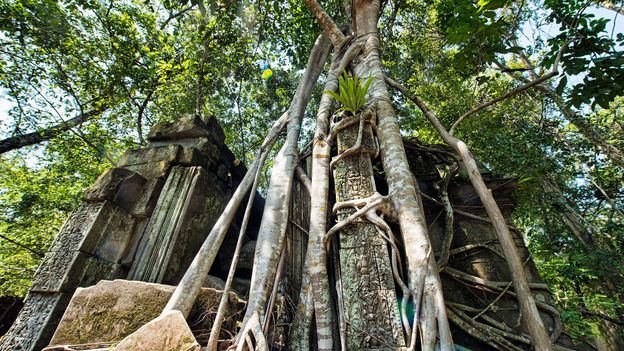
Detectives retraced the couple’s last days. The gas station clerk remembered them as cheerful, mentioning a campsite near an old mining road. The Corolla’s location supported this, but the map inside showed no specific destination, just a highlighted route veering off the main park roads. Police theorized the killer lured them to the remote spot, perhaps posing as a guide or local offering directions. The absence of another vehicle’s tracks suggested the killer traveled on foot or used a method that left no trace—a quad bike, perhaps, or a horse. But with no witnesses in such a desolate area, the theory remained just that.
The investigation widened. Police cross-referenced other missing persons cases in Arizona’s wilds. A hiker vanished in 2008 near Sedona, his backpack found but no body. A photographer went missing in 2012 near Flagstaff, her camera recovered in a ravine. Neither case matched the precision of Ray and Nicole’s murder, but the pattern of disappearances in remote areas raised red flags. Was this a one-off, or part of a larger, hidden spree? No evidence linked the cases, but the desert’s vastness made it a perfect hunting ground for someone who knew how to disappear.
The families of Ray and Nicole, finally able to bury their loved ones, faced a new kind of pain. “They were just kids, starting their lives,” Nicole’s mother said at a press conference, her voice breaking. “Someone took that from them, and we don’t even know why.” Ray’s brother, a quiet man in his 30s, added, “We have them back, but not the truth. That’s what keeps me up at night.” Memorials sprang up online, with friends sharing stories of Ray’s dry humor and Nicole’s infectious laugh. A GoFundMe raised money for a scholarship in their names, but no amount of goodwill could fill the void left by their deaths.
Criminology programs now study this case as a stark reminder of nature’s ability to shield the guilty. Forensic science, for all its advances, falters against time and terrain. The mine’s conditions—dry, cold, sealed—preserved the bodies but destroyed trace evidence. The killer’s foresight in moving the bodies suggested experience, perhaps prior crimes. Yet no suspect has emerged. No arrests, no charges, no name to pin the horror to. The case remains open, a file dusted off each year by new detectives hoping for a break.
Investigators have one last hope: the public. Northern Arizona’s small towns thrive on gossip, and someone, somewhere, might remember a detail from 2010—a stranger on a trail, an odd conversation, a vehicle out of place. Police urge anyone with information to call the Coconino County Sheriff’s Office. “Even a rumor could crack this,” lead detective Sarah Conway said. “Someone knows something. They just need to speak.”
The desert doesn’t give up its secrets easily. Ray and Nicole’s killer may still walk Arizona’s streets, blending into the everyday—buying coffee, passing landmarks tied to their crime. Or they may be gone, their truth buried deeper than the mine. For now, two graves hold the only answers found, while the wilderness stands silent, guarding a predator’s legacy. But silence protects no one forever, and somewhere, a single spark of memory could light the path to justice.
News
The Life in Your Heart
The Life in Your Heart There are kinds of love that feel like a clear morning—the light arrives slowly, warmth spreads, and it promises a beautiful day. Such was the love of Adrian and Isabella. It wasn’t a blazing…
Kate’s Mysterious Accessory Sparks Palace Whispers: A Subtle Message Aimed at Meghan?
“Kate’s Mysterious Accessory Sparks Palace Whispers: A Subtle Message Aimed at Meghan?” The royal stage may look polished, but behind the scenes, every gesture, every smile, and every accessory is dissected like a hidden code. And this week, all eyes…
On my wedding day, my ex-wife showed up pregnant to congratulate us — My new wife asked just one question and what my ex revealed made me lose everything…
On my wedding day, my ex-wife showed up pregnant to congratulate us — My new wife asked just one question and what my ex revealed made me lose everything… The most shocking thing was that she arrived with a very…
Every night, my mother-in-law knocks on our bedroom door at 3:00 a.m., so I set up a hidden camera to see what she’s doing. When we saw him, we both froze…
Every night, my mother-in-law knocks on our bedroom door at 3:00 a.m., so I set up a hidden camera to see what she’s doing. When we saw him, we both froze… Arjun and I have been married for over a…
A cowherd gave his only horse to a wounded Apache; The next day, 70 warriors the unthinkable…
A cowherd gave his only horse to a wounded Apache; The next day, 70 warriors the unthinkable… Sterling Madox stared at the horizon, where 70 Apache warriors stood motionless on their horses watching him. They had been there since dawn,…
THE HUMBLE JANITOR WHISPERED, “DON’T SIGN THE DEAL FOR MILLIONS.” THEN THE MILLIONAIRE CEO LOOKED AT HIM AND…
THE HUMBLE JANITOR WHISPERED, “DON’T SIGN THE DEAL FOR MILLIONS.” THEN THE MILLIONAIRE CEO LOOKED AT HIM AND… The humble janitor whispered, “Don’t sign the $3 billion deal.” The millionaire SEO looked at him and did not sign that deal….
End of content
No more pages to load




